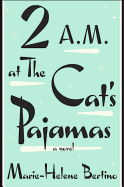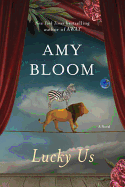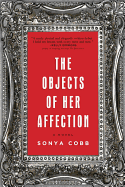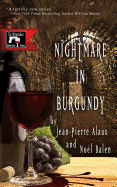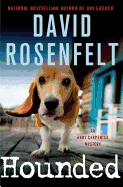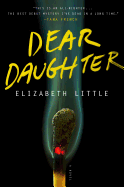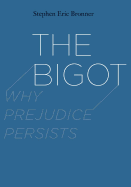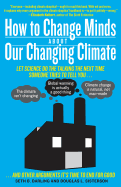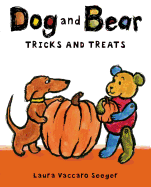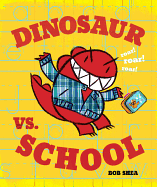 Ken Hughes, a journalist and researcher at the University of Virginia's Miller Center Presidential Recordings Program, has been listening to Richard Nixon's secret recordings since they were first made public in 1996. He's written articles on the tapes of Richard Nixon and John F. Kennedy for the New York Times Magazine, the Washington Post and the Boston Globe Magazine. His debut book, Chasing Shadows: The Nixon Tapes, the Chennault Affair, and the Origins of Watergate, is out this week from the University of Virginia Press. In Chasing Shadows, Hughes draws on the private recordings of Lyndon B. Johnson and Richard Nixon to connect the dots between the crime Nixon committed to help him win the 1968 presidential election (referred to as the Chennault Affair), his myriad abuses of power while in office and, ultimately, his downfall and resignation. Full of fascinating scenes and candid conversations pulled verbatim from Nixon's tapes, Hughes's book is as compelling as a novel.
Ken Hughes, a journalist and researcher at the University of Virginia's Miller Center Presidential Recordings Program, has been listening to Richard Nixon's secret recordings since they were first made public in 1996. He's written articles on the tapes of Richard Nixon and John F. Kennedy for the New York Times Magazine, the Washington Post and the Boston Globe Magazine. His debut book, Chasing Shadows: The Nixon Tapes, the Chennault Affair, and the Origins of Watergate, is out this week from the University of Virginia Press. In Chasing Shadows, Hughes draws on the private recordings of Lyndon B. Johnson and Richard Nixon to connect the dots between the crime Nixon committed to help him win the 1968 presidential election (referred to as the Chennault Affair), his myriad abuses of power while in office and, ultimately, his downfall and resignation. Full of fascinating scenes and candid conversations pulled verbatim from Nixon's tapes, Hughes's book is as compelling as a novel.
For those who may not be aware, what was the Chennault Affair?
The Chennault Affair was the crime Richard Nixon committed to become president in the first place. In the closing days of the 1968 presidential campaign, President Lyndon Johnson agreed to stop the bombing of North Vietnam when Hanoi finally accepted his demands that it 1) respect the demilitarized zone dividing Vietnam, 2) stop shelling civilians in South Vietnamese cities, and 3) sit down with the South Vietnamese government and begin peace talks in Paris. Nixon was afraid that if peace talks started before Election Day, it would help his Democratic opponent--LBJ's vice president, Hubert Humphrey. So Nixon secretly encouraged the South Vietnamese to boycott the peace talks. This was a violation of the Logan Act, which makes it illegal for American citizens to interfere with negotiations between the United States government and other governments. Nixon used a cutout to protect himself, a prominent Republican fundraiser named Anna Chennault, who delivered messages between the Nixon campaign and the South Vietnamese government. Johnson found out about Chennault, and an FBI wiretap on the South Vietnamese embassy phone even overheard her encouraging the South to boycott the peace talks on behalf of "her boss (not further identified)." That's from the FBI wiretap report.
The FBI never did get the goods on Nixon himself, however, which is why he got away with it.
Spoiler warning: There's no smoking gun that proves Nixon was behind the Chennault Affair, but Chasing Shadows lays out the abundant evidence that he was culpable.
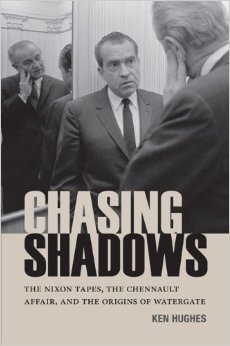 When, and why, did you decide to write a book on the Chennault Affair? What blind spots, so to speak, about Nixon's presidency and political career, did you hope to fill?
When, and why, did you decide to write a book on the Chennault Affair? What blind spots, so to speak, about Nixon's presidency and political career, did you hope to fill?
It started with a mystery. On the thousands of hours of Nixon tapes the government has declassified, you can hear Nixon order exactly one break-in, and it's not the one at the Watergate. Nixon ordered a burglary of the Brookings Institution, a Washington think tank, to get his hands on a file that was supposedly full of government documents on the 1968 bombing halt. It makes no sense. Nixon said he wanted the documents to blackmail LBJ for calling the bombing halt to elect Hubert Humphrey--but LBJ didn't do that. Johnson just set out his three demands and didn't budge until Hanoi accepted them all. And what good would blackmailing LBJ do Nixon, anyway? Johnson supported Nixon on Vietnam. Nixon was taking an enormous risk--of impeachment and imprisonment--for little payoff.
Unless he was trying to seize the evidence of his own involvement in the Chennault Affair. While Johnson didn't have the goods on Nixon, Nixon didn't know that. LBJ sometimes implied that he knew more than he did. And FBI director J. Edgar Hoover claimed that LBJ had bugged Nixon's plane during the closing weeks of the 1968 campaign. That wasn't true, but it was enough to scare Nixon.
The more research I did, the clearer it became that Nixon was obsessed with getting his hands on all the government documents having to do with the bombing halt. It was one of the reasons he created "the Plumbers," the Special Investigations Unit he tasked with breaking into Brookings. And concealing the existence of the Plumbers was one of the reasons he launched the Watergate cover-up. The "masterminds" of the Watergate break-in, former CIA agent E. Howard Hunt and former FBI agent G. Gordon Liddy, had been recruited by the White House as Plumbers, and a full investigation of their crimes would have led back to Nixon's. The Chennault Affair turns out to be a thread that ties together some of Nixon's worst abuses of power, and that story hadn't been fully told. In many ways, the Watergate cover-up worked.
Tell us about your research process for Chasing Shadows. How much time did you spend listening to the recordings of both Nixon and Lyndon B. Johnson? Were there any major surprises in these recordings?
Some of the research for Chasing Shadows goes back to the 1990s, when I was burning up use-or-lose vacation days and hearing Nixon order the Brookings break-in the first time. I've spent more than a decade studying the politics of the Vietnam War as it's revealed on the secretly recorded White House tapes of Nixon, LBJ and JFK. The biggest surprise the tapes provide is how much more there is to learn. A lot of what is considered the history of Vietnam is just political spin that has hardened into historical myth. Reputable historians still claim LBJ ordered the bombing halt to elect Humphrey--and the declassified White House documents and tapes plainly show that he did not. It's commonly believed that Johnson gave Humphrey the chance to expose the Chennault Affair--but that's also a myth. In fact, Johnson told Humphrey not to accuse Nixon because he lacked proof. The biggest myth is that Nixon won the Vietnam War. That gets repeated every time politicians argue against getting out of Afghanistan or Iraq--and now when they argue for getting back into Iraq. Nixon's tapes prove that his Vietnamization program of training the South Vietnamese to defend themselves and his Paris Peace Accords were frauds designed to postpone, not prevent, defeat. He had a Vietnam strategy for winning elections, but not for winning the war itself.
What, in your opinion, is the common consensus on Nixon and his presidency? What is his legacy?
Most people split the difference with Nixon. He's seen as a master of foreign policy brought down by his fatal weakness for political chicanery. A statesman abroad, but a rogue at home.
In reality, his worst abuses of power involved foreign policy. No one died in Watergate, but many Americans died because he prolonged the Vietnam [War] for political gain. That started with the Chennault Affair, and it continued into his presidency.
Lastly, do you see any parallels between Nixon's presidency and current events?
Every time a politician argues that we must keep Americans fighting and dying in Iraq or Afghanistan because otherwise we'll lose--and at the same time fails to come up with a strategy to actually win--it reminds me of how Richard Nixon played politics with war and peace. --Alex Mutter
Ken Hughes: Playing Politics with War and Peace




 When, and why, did you decide to write a book on the Chennault Affair? What blind spots, so to speak, about Nixon's presidency and political career, did you hope to fill?
When, and why, did you decide to write a book on the Chennault Affair? What blind spots, so to speak, about Nixon's presidency and political career, did you hope to fill?